Note: Images are clickable and will open a context-related clip from the documentary (Quicktime required).
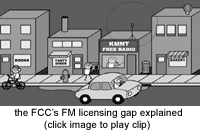 Making Waves (2004) is the second feature-length documentary from Jump Cut Films, the outlet of Michael Lahey. Central to the film are profiles of three microradio stations sharing the airwaves of Tucson, Arizona. Lahey manages to weave these separate stories into an overall narrative about the modern microradio movement, using the Reverend Rick Strawcutter as a tie-in to the national scene.
Making Waves (2004) is the second feature-length documentary from Jump Cut Films, the outlet of Michael Lahey. Central to the film are profiles of three microradio stations sharing the airwaves of Tucson, Arizona. Lahey manages to weave these separate stories into an overall narrative about the modern microradio movement, using the Reverend Rick Strawcutter as a tie-in to the national scene.
Infused throughout are some slick animation mini-scenes, representing what is probably the best effort to-date to simplify the technical controversies that have plagued microradio before (but especially since) the genesis of a legal LPFM service. The icing on the cake, however, is that this snapshot of pirate radio in Tucson is also honest about the diversity of microbroadcasting, sometimes brutally so.
 In all, it’s a very ambitious 64 minutes. DIYmedia had a chance to interview Michael Lahey via e-mail about the documentary, and his quotes are sprinkled throughout the following review.
In all, it’s a very ambitious 64 minutes. DIYmedia had a chance to interview Michael Lahey via e-mail about the documentary, and his quotes are sprinkled throughout the following review.
Making Waves didn’t begin on the air, but on cable TV; more specifically, Tucson’s cable public access channel system. When filming on the documentary began September of 2000, the project was to be a character study of Shane Eden, who bears more than a passing resemblance to Santa Claus and had spent the last 16 years hosting a public access TV program. Eden was also involved in the launch of an unlicensed “constitutional” radio station, named KRVL.
“The more I learned about the LPFM movement, and the civil disobedience of the pirates that had pushed the issue of radio and free speech into the courts and Congress,” wrote Lahey, “the more I wanted to integrate the LPFM story into the character study.”
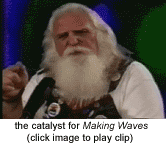 Through his contact with KRVL Lahey learned there was more than just one microradio station on the air in Tucson. That led to meetings with two more: KOPC and Radio Limbo. The founder of KOPC was originally involved with KRVL but spun off his own station to pursue inquires beyond the limited realm of political speech.
Through his contact with KRVL Lahey learned there was more than just one microradio station on the air in Tucson. That led to meetings with two more: KOPC and Radio Limbo. The founder of KOPC was originally involved with KRVL but spun off his own station to pursue inquires beyond the limited realm of political speech.
Radio Limbo was explored last, since it employs the “stealth mode” of broadcast operations. “David Forbes of Radio Limbo was the last one I interviewed, about 9 months into the project,” said Lahey. It is Forbes, along with cuts from an interview conducted with the infamous reverend Rick Strawcutter (Radio Free Lenawee), who provide the factual narrative of the documentary.
“James [Welborn, KOPC/Free Radio Tucson]…actually had a copy” of a now-classic how-to microradio video produced by Rick Strawcutter. That led to arrangements for an interview, later shot by cinematographer Colin Sims. With the components in place, the premise of the documentary was fundamentally changed.
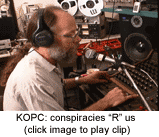 “I negotiated nothing with my interviewees other than telling them that I would let them voice their opinions and then present [them] as openly as possible,” said Lahey. “I think that they correctly felt that I was genuinely curious about their ideas and their plight, and that I had very few preconceived notions about them.”
“I negotiated nothing with my interviewees other than telling them that I would let them voice their opinions and then present [them] as openly as possible,” said Lahey. “I think that they correctly felt that I was genuinely curious about their ideas and their plight, and that I had very few preconceived notions about them.”
This leads to Lahey’s ability to capture some incredibly candid moments and paint some vivid pictures about each station’s personality. This process, from first interview to final cut, took three and a half years and involved about 75 hours of raw footage. It ended just three days before its Making Waves premiered at the Arizona International Film Festival (April 21, 2004). In between Lahey moved from Tucson to Minneapolis.
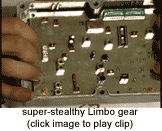 Each station profile has its own nuances, and together they present an interesting cross-section of the politics that take part in the microradio movement. KRVL was the most public pirate on Tucson’s dial and declared itself quasi-legal on First Amendment grounds. KRVL’s crew (which include the millionaire Marshall Home and Aage Nost, along with Shane Eden) generally dispute federal authority in any form. This was painfully demonstrated in two scenes.
Each station profile has its own nuances, and together they present an interesting cross-section of the politics that take part in the microradio movement. KRVL was the most public pirate on Tucson’s dial and declared itself quasi-legal on First Amendment grounds. KRVL’s crew (which include the millionaire Marshall Home and Aage Nost, along with Shane Eden) generally dispute federal authority in any form. This was painfully demonstrated in two scenes.
In the first, the trio disrupts an LPFM teach-in session hosted by a representative of the Prometheus Radio Project – a very misguided protest against federal license authority. The second is when Marshall Home gets rhetorically spanked in a state court for failing to purchase license plates for his car.
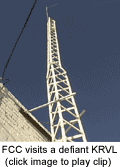 “To me, the folks at KRVL are at once heroic and tragic,” said Lahey. “They’re heroic because they stand up for what they believe in,” even more so because they do it in the face of adversity. “But they’re tragic in that they are tactless [and] sometimes misguided, and often seemed more concerned with thumbing their noses at the government than building a community following. The footage bore this out, so that’s the film you ultimately see. Had they been able to galvanize the Tucson community into getting behind their station, you would have seen a different film.”
“To me, the folks at KRVL are at once heroic and tragic,” said Lahey. “They’re heroic because they stand up for what they believe in,” even more so because they do it in the face of adversity. “But they’re tragic in that they are tactless [and] sometimes misguided, and often seemed more concerned with thumbing their noses at the government than building a community following. The footage bore this out, so that’s the film you ultimately see. Had they been able to galvanize the Tucson community into getting behind their station, you would have seen a different film.”
These incidents are genuine wince-moments; Lahey says they’re essential to the truth of the story. “Some have argued that by showing the warts and all of KRVL, I undercut the argument for why we need LPFM. My response is that if we truly democratize the airwaves, we will get a cross-section of different people and stations not unlike those found in Making Waves, some [of whom] would appeal to many, some of which would not. And while the folks at KRVL may not be the poster boys for LPFM, I think that by exploring their station, the audience sees and understands the challenges of putting together a [sustainable] radio station.”
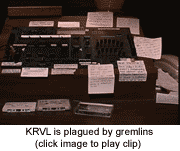 Without giving too much more away, there’s an irony that of the stations profiled in Making Waves, Radio Limbo is the only surviving station. “I think that the open battle that stations like KRVL wage against the FCC is riskier than Limbo’s clandestine operation, but I’m not so sure in the current climate if it’s the most effective,” comments Lahey. “As [Limbo founder] David Forbes says in the film, you can stick up for your rights, but when you get busted, it is better that you weren’t sticking up at that particular time.”
Without giving too much more away, there’s an irony that of the stations profiled in Making Waves, Radio Limbo is the only surviving station. “I think that the open battle that stations like KRVL wage against the FCC is riskier than Limbo’s clandestine operation, but I’m not so sure in the current climate if it’s the most effective,” comments Lahey. “As [Limbo founder] David Forbes says in the film, you can stick up for your rights, but when you get busted, it is better that you weren’t sticking up at that particular time.”
Reverend Strawcutter’s story swerves from profile to narrative and back again, but his stature and partial success in challenging the FCC allow him the pulpit to present a pretty impassioned overview of microradio in the U.S. This, too, is not bereft of candidness: Strawcutter’s perspective on the movement’s health is pessimistic at best. Lahey respectfully disagrees. “A number of positive things have happened in the last few months that have revived legal LPFM and have me somewhat optimistic about its future…[but]…the NAB, Michael Powell, and the [Bush] administration have been less than kind to LPFM, [they] provide big hurdles to overcome, so I’m remaining cautiously optimistic.”
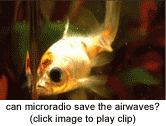 In addition to packing a micro-history of microradio and three station profiles into a single hour, Making Waves has simplified some some of the more complicated technical issues that are integral to understanding the microradio/LPFM debate. This is accomplished through the work of animator Steve Stwalley, who transformed Lahey’s “crudely sketched drawings” into effective vignettes that do the pro-LPFM argument justice.
In addition to packing a micro-history of microradio and three station profiles into a single hour, Making Waves has simplified some some of the more complicated technical issues that are integral to understanding the microradio/LPFM debate. This is accomplished through the work of animator Steve Stwalley, who transformed Lahey’s “crudely sketched drawings” into effective vignettes that do the pro-LPFM argument justice.
Ultimately, making Making Waves was not inexpensive: while Lahey self-financed the project to the tune of about $10,000, the budget (and quality) was significantly stretched at least ten-fold through all sorts of in-kind and donated production assistance from several film professionals. He is grateful for their self-sacrifice: “I was able to find several talented people who, after hearing about the topic and viewing the footage, joined the project and put in hours of work, along with donating equipment and editing facilities.”
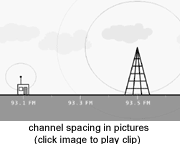 That combination of sheen and substance has brought critical reward. Making Waves won Best Feature Documentary at the 2004 Great Lakes Independent Film Festival and Best Documentary Feature at the Northern Lights Documentary Festival. Audiences get excited about the issues of microradio and its causes, and Lahey says that’s an excellent reward in itself.
That combination of sheen and substance has brought critical reward. Making Waves won Best Feature Documentary at the 2004 Great Lakes Independent Film Festival and Best Documentary Feature at the Northern Lights Documentary Festival. Audiences get excited about the issues of microradio and its causes, and Lahey says that’s an excellent reward in itself.
“I think that the original…LPFM proposal…goes a long way in helping give the airwaves back to the people,” he wrote. “But…there will still be many areas where LPFM won’t be legally available, and that’s where I think city council members and concerned citizens need to step in to defend and support unlicensed stations…as long as these stations do not interfere with any other station.”
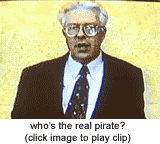
If you’re interested in purchasing a copy of Making Waves, please e-mail Michael Lahey directly at: info@jumpcutfilms.com.
Skip to content